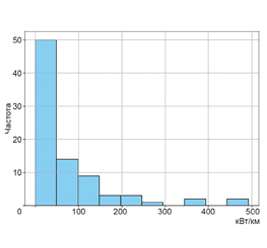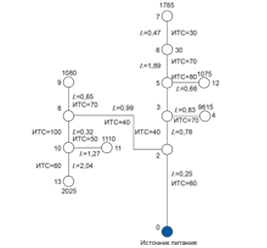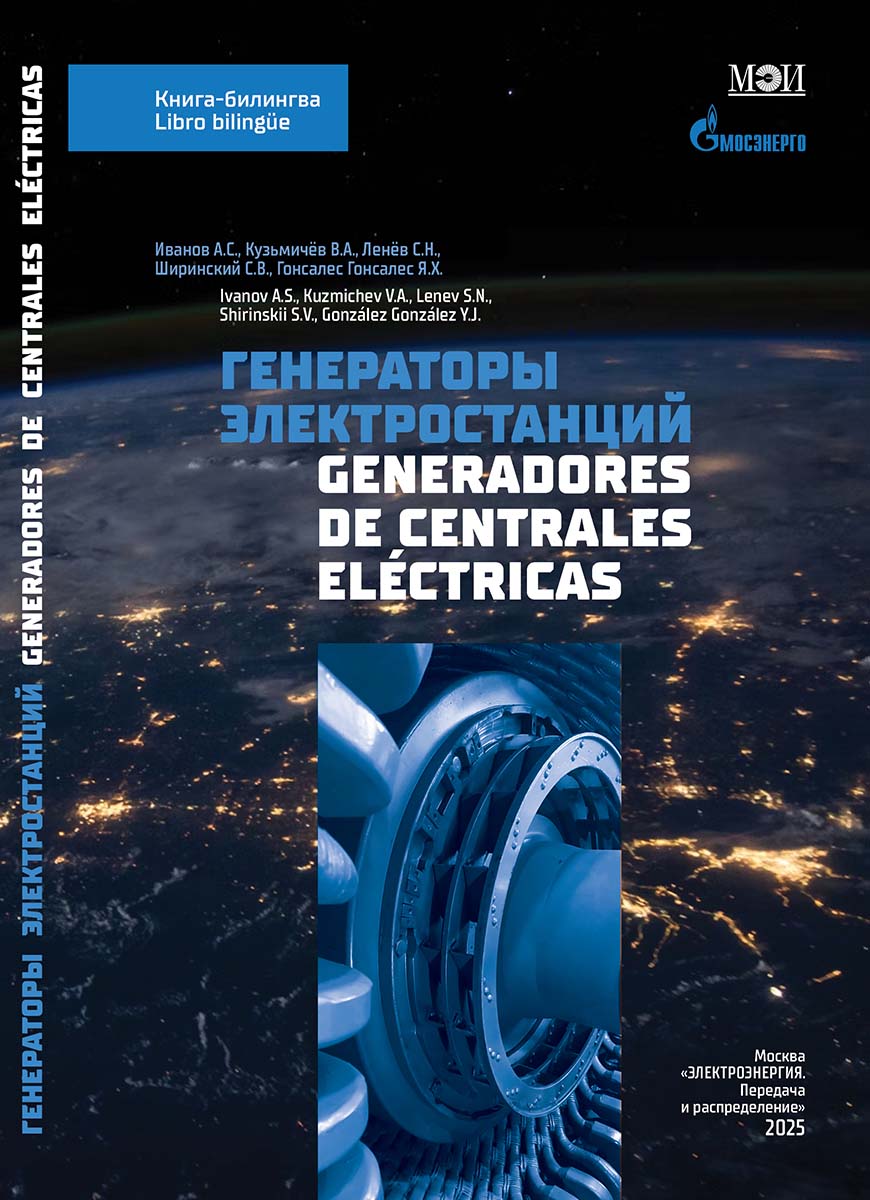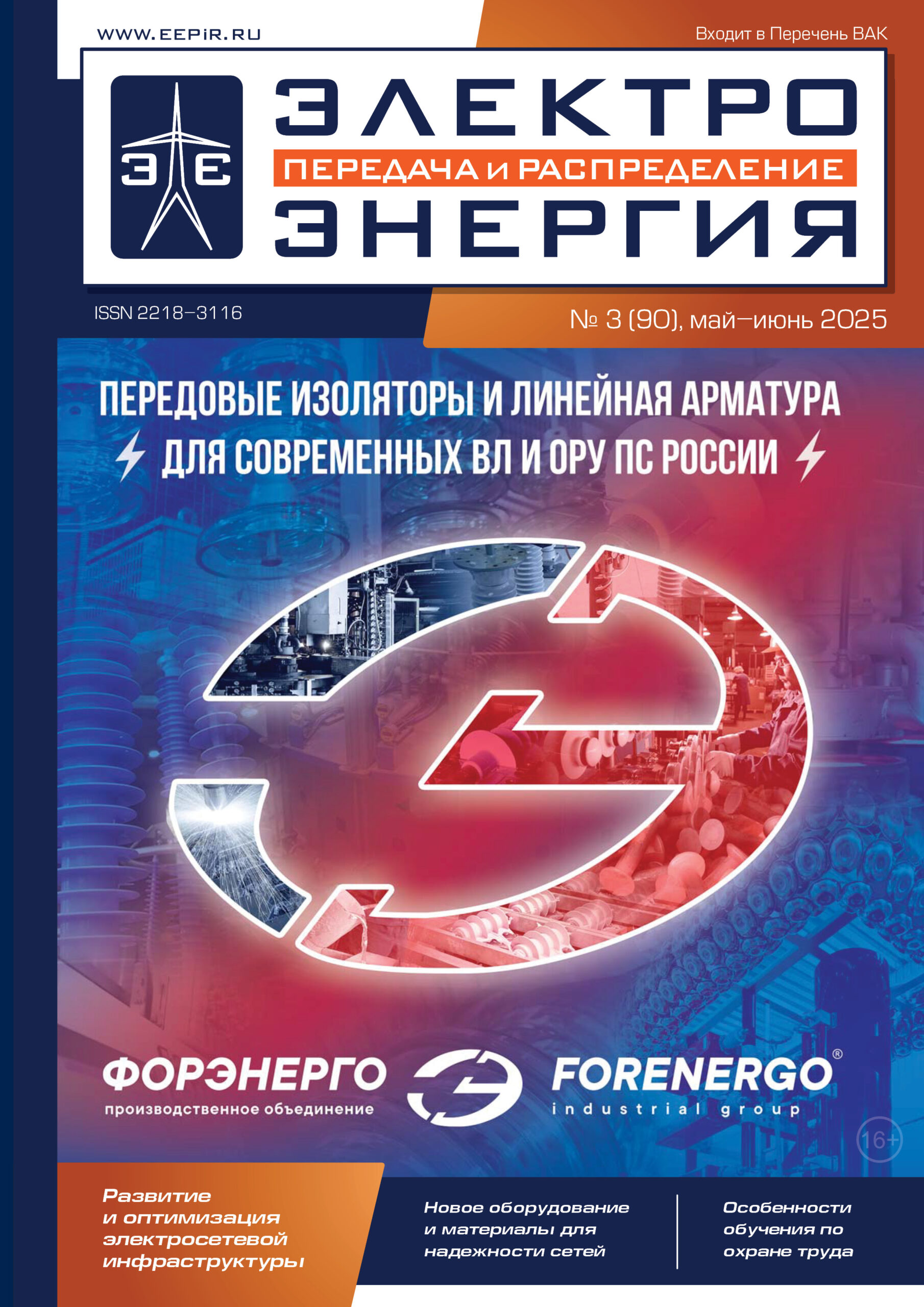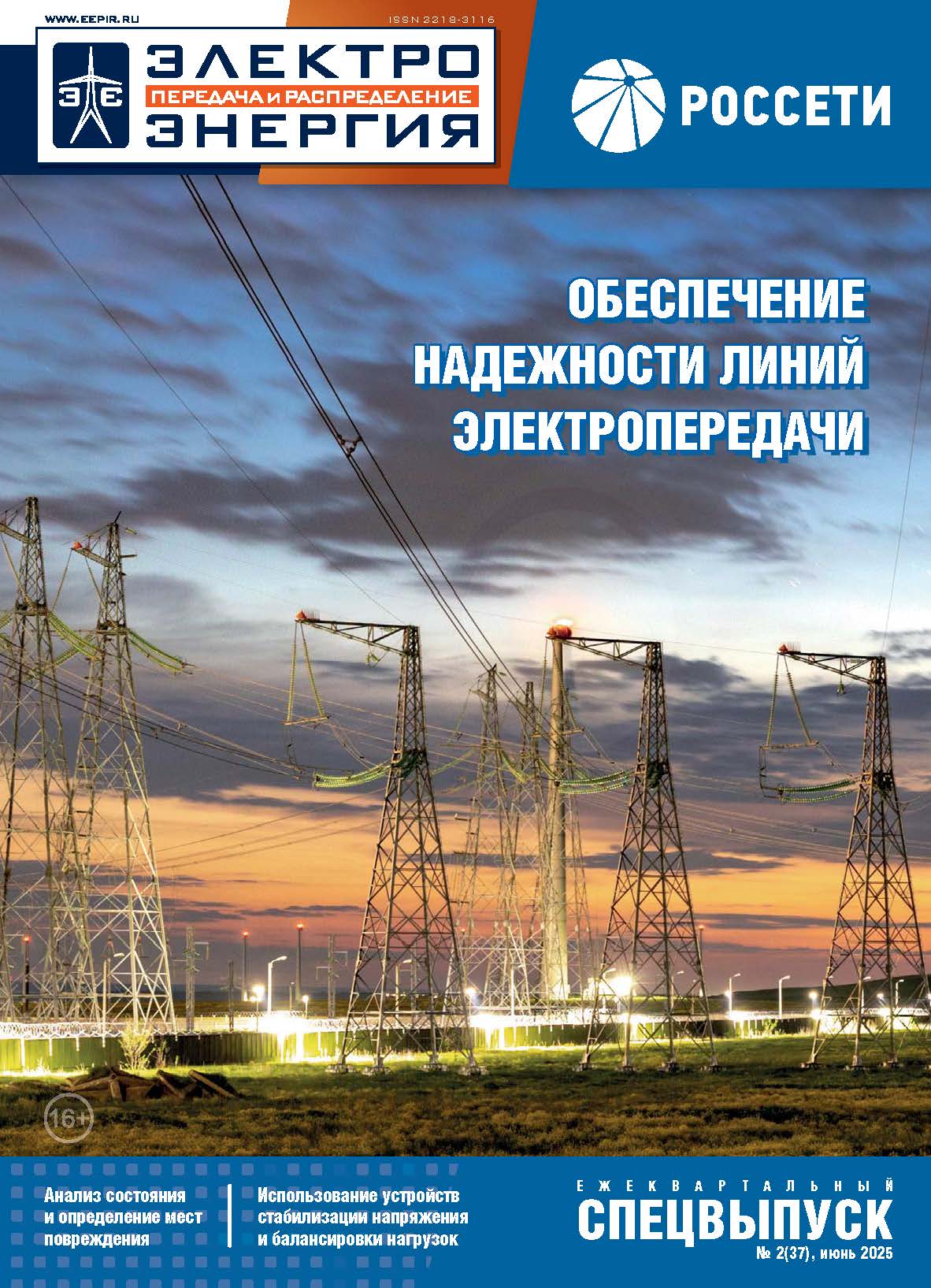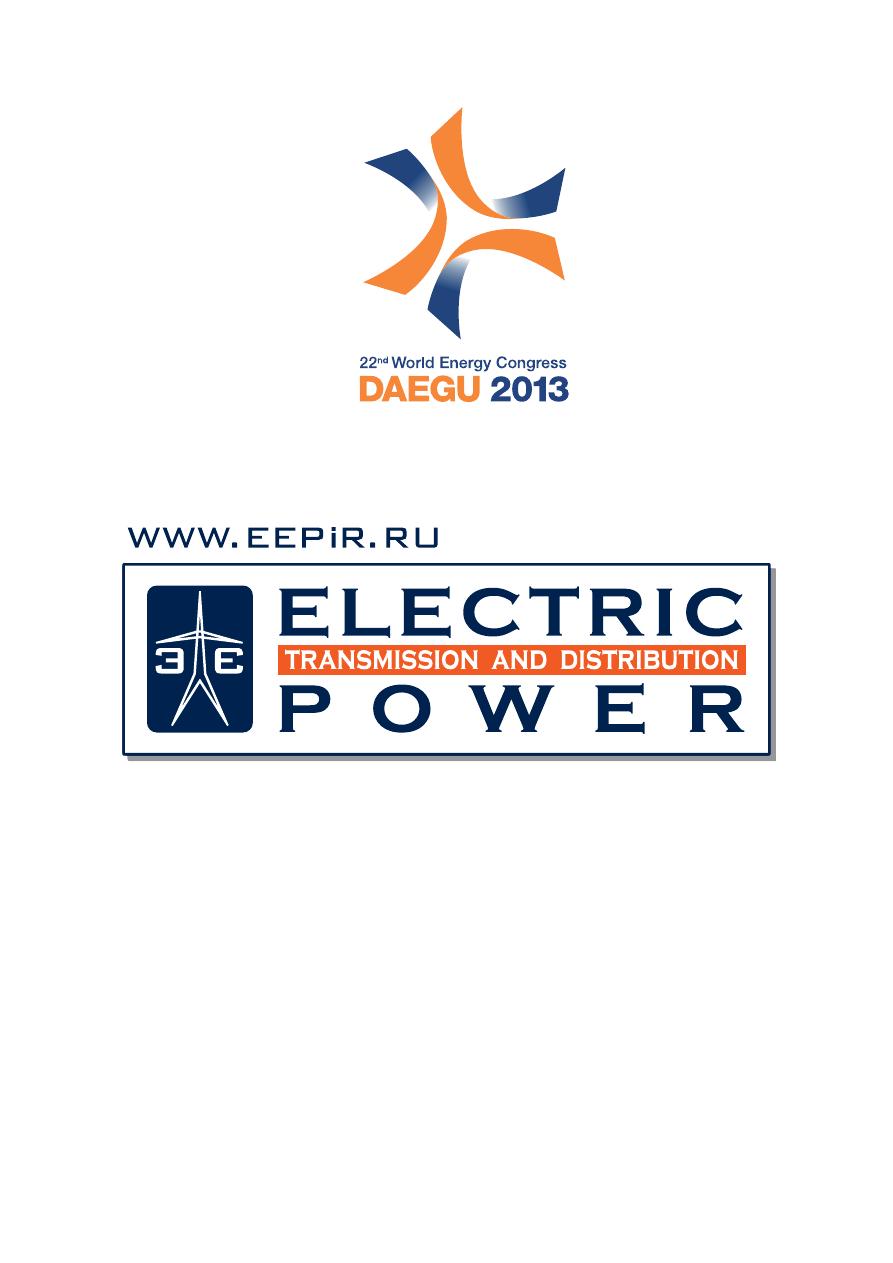
The MAIN JOURNAL for POWER GRID SPECIALISTS in RUSSIA

8
DIGEST, october, 2013
Russian Grids
— Andrey Vladimirovich, what were the power
grid and integrated power grid of the Sochi region, in
particular, topology, technical condition, transmission
capacity, limitations and prospects of development
not taking into account preparation for the Olympic
Games?
— Sochi power district is part of Krasnodar region
power grid and Uni
fi
ed Energy System of the South
(the UES of south). Even six years ago prior to the
commencement of work on the project the power grid did
not meet the requirements for Olympic venues.
Sochi power consisted of just three 220 kV
substations — Psou, Dagomys and Shepsi and of
only three own generation sources — Sochi thermal
power plant, Tuapse Re
fi
nery thermal power plant and
Krasnopolyanskya hydroelectric power plant. The bulk
of electricity was supplied to Sochi and Tuapse from
outside.
At that time the area was supplied over high-voltage
overhead transmission lines which were routed to the
Black Sea coast through the mountain passes. 110 and
220 kV lines were originally designed for 200—250 MW
transmission capacity. Moreover the lines passed through
very hard-to-reach places in the mountains through high
risk areas associated with landslide hazards and seismic
activity. They were poorly protected from impacts of
disaster.
Sochi residents recall terrible energy catastrophe
of 1997, when due to heavy snowfall in the mountains
the town was completely left without electricity for two
weeks and was freezing. Same outages due to the wire
break in the mountains also occurred in 2003 and 2007
respectively, when the entire coastline from Tuapse and
Adler remained without electricity for many days in a row.
The situation began to change dramatically in
the summer of 2007 when Sochi was announced the
2014 Winter Olympics capital. Then it was decided to
revamp the entire energy system considering accelerated
development and, as a result, constant demand growth.
Without this the situation with electricity in Sochi and
Tuapse would be just critical.
— What are the basic requirements to the grid of
the area have been brought after the decision to hold
the Olympics? How did they change over time?
— Before starting the Olympic projects maximum
power supply to consumers in the region amounted to
543 MW. Honestly, taking into account the planned load
during the Olympics and Paralympics as well as Sochi
district sharp electricity demand growth, this was not
enough. To provide all Olympic venues with the required
amount of electricity and improve the reliability of power
supply of Sochi it was required to build and modernize the
existing generation capacities, substations, 220 and 110
kV backbone and 6—10 kV power distribution networks.
Now the implementation of the integrated program for
repair and modernization of power generation equipment
is in its
fi
nal stage.
It is worth to note that the scheme of 220 kV power
supply network and above stipulated, primarily, the
development of local sources of generation. Speci
fi
cally
for the needs of Olympic capital the power of the Sochi
Thermal power station was increased twice, up to
160 MW, in close proximity to the Olympic Park 360 MW
Providing a reliable power
supply of Olympic objects
in Sochi
Preparations for the Winter Olympic Games to be held from 7 to
February 23, 2014 in Sochi, lasted for over 6 years. During this
time, a large amount of work has been done, not only for sports
facilities but also to ensure reliable and uninterrupted power
supply. On the outcome of the largest project in the modern history
of the Russian power industry tells Deputy Minister of Energy of
Russia Andrei CHEREZOV (
Андрей
ЧЕРЕЗОВ
).

9
info@eepr.ru, www.eepr.ru
capacity Adler Thermal power station was built.
Now the construction of Dzhubginskaya Thermal
power station, which will also be able to transmit
180 MW of power to the Olympics, is getting to its
fi
nal stage. From 2009 year the total transformer
power of Sochi substations went up from 1632.78
to 3511.05 MVA, i.e. it was more than doubled.
Thus we managed to surpass design parameters of
consumption for the period of the Olympic Games
at the expense of own generation. However, as
Sochi power district remains a part of the power
grid of Krasnodar krai and UES of South, in case
of emergency we are able to draw extra power
through 110—220 kV lines with approximately
660 MW overall transmission capacity. When this
version of electricity supply was analyzed it was
concluded that it was also necessary to strengthen
its relationship with the Kuban energy system
and to upgrade the existing lines. In early August
JSC Rosseti
1
reported about completeness of one
of such projects — two 220 kV overhead lines
Dzhubginskaya TPP — SS Shepsi and Dzhubginskaya
TPP — Goryachi Kliuch. It's not only the issue of a new
power plant generation but mainly an alternative way of
transmission lines through the Caucasus Mountains. All
other lines are actually passing in a bundle that under very
negative developments is fraught with failure of all lines
at the same time. Now there is an additional independent
transit of electricity. In addition to this, the Federal grid
company of JSC Rosseti group of companies introduced
the most advanced devices capable to protect existing
overhead lines from icing and also conducted a large-
scale work for strengthening lighting-surge proofness and
tower foundations.
— Are there any alternative technical solutions to
ensure reliable and uninterrupted power supply of the
Olympics (alternative sources)?
— Part of the load is expected to be covered through
the deployment of mobile sources of generation, mobile
GTPP intended for backup in the event of an accident at
the substations. All three venues in Sochi will host nine
mobile gas turbine power stations (mobile GTPP) with a
total capacity of 202.5 MW.
Mobile gas turbine power plant is placed on trailers
that allow you to move the equipment to the prepared site
and to respond quickly to shortages of electricity. The
site is prepared as an energy object with technological
equipment and scheme of power distribution. The mobile
gas turbine plants are featured with low space requirements
and low service personnel, as well as low noise and high
environmental performance.
In addition, all Olympic sporting sites have alternative
sources. These diesel generator sets are intended to avoid
disruption of electricity supply during the competition.
There are also UPS devices which, if necessary, will be
turned on during the venue switching from the supergrid
system to diesel generator sets.
— What are the necessary amounts of energy
construction and reconstruction (in physical and
monetary terms)?
— To ensure a reliable supply of the Olympic
Games in Sochi JSC Rosseti builds and reconstructs
52 power objects including erection and repair of 220 and
110 kV transformer substations and load dispatch centers,
overhead and cable lines of different voltage classes from
6 up to 220 kV.
To date more than 60 billion rubles (about 2 billion
dollars) were invested for the development of the regional
energy system. These are huge funds but they have been
invested in providing a reliable power supply for a few
dozen years ahead due to the use of the most advanced
technologies and the use of innovative equipment.
— What are the main mechanisms for
fi
nancing the
construction of electric power used in the realization of
this integrated project?
— Construction and reconstruction of Olympic power
sites is carried out at the expense of the State budget
according to construction of Olympic facilities and
development of Sochi as Alpine climatic resort Program,
and at own expense of Rosseti Group of companies
within the framework of the investment program for the
development of networks for the XXII Olympic Winter
Games and XI Paralympic Winter Games 2014.
220 kV GIS substation Dagomys.
1
At present, further integration of electrical grid facilities
is going on — in 2012 JSC Rosseti was established. The
company has been arranged by renaming JSC IDGC
Holding to JSC Rosseti and contribution of JSC FGC UES
shares being in federal ownership (79.55% of shares) into its
authorized capital. The Russian Federation state continues
to participate in JSC FGC UES authorized capital with at
least one share.

10
DIGEST, october, 2013
Russian Grids
— What is the uniqueness of these objects? What
are the latest technical solutions and technologies used
in their design and construction?
— JSC FGC UES and Kubanenergo of Rosseti group
of companies widely apply innovative technical solutions
in the construction of Olympic projects. Cables with
XLPE insulation used during the construction of 110 kV
cable lines and at modernization of 6—10 kV distribution
networks are more environmentally friendly, safe and
reliable in operation, reduce losses during transmission of
electricity due to high moisture resistance. The overhead
lines use the modern AERO-Z wires characterized by
a tighter twisting of conductors and smoother surface
than conventional wires. This reduces losses during
transmission of electricity, increases transmission
capacitance of overhead lines with the same cross-section
wire. In addition, the galloping of conductors, sticking of
snow and ice deposit is reduced.
Application of the gas-insulated switchgear, GIS,
signi
fi
cantly reduces the area substations, does their work
noiseless. GIS provide certain advantages over traditional
open-type-bus-and-switch arrangement. They are 10 times
smaller, reliable and safe in operation, exclude the impact
on the environment, do not require expensive foundations
and hoisting mechanisms, and signi
fi
cantly reduce labor
costs for installation. In addition one multifunctional
housing comprises busbars, disconnectors, and current
transformers. Service life of the equipment exceeds
50 years.
During the construction of transmission lines
multifaceted towers are used. Compared with the
traditional lattice tower a multifaceted tower is a versatile
one-piece steel construction, is an order of magnitude
smaller space which is especially important in low areas
of Olympic construction. The advantages of the new
type of towers include improved corrosion resistance,
resistance to signi
fi
cant wind loads. In addition, a modern
multi-faceted tower design with the ready-made sections
allows 10 times reduction of labor costs for installation.
The service life of a multifaceted tower is 50 years - twice
as long as a concrete tower. To deal with icing the power
lines are equipped with a unique control system of ice
loads, which creates conditions for stable operation in the
normal mode and reliable energy supply.
Speaking of the sub-stations, it is important to note that
a unique method was implemented in lines approach to
Vereshchagin substation. It is made by micro tunneling.
Because the substation is surrounded by a densely built-up
area, the experts decided not to invade another's territory
and built a 850-meter tunnel. This method is more ef
fi
cient
because it permits to avoid digging during repair of the
line.
Moreover the location of the mountain cluster
substations — 220 kV Poselkovaya, 110 kV Rosa Khutor,
110 kV Laura and 110 kV Sportivnaya in the area of the
Olympic Games set an interesting challenge to power
engineers — to build not only a reliable energy facilities
but organically
fi
t them into the architecture of the capital
city of the 2014 Winter Olympics using modern design
solutions.
Each substation has turned out a unique facility. In
particular, Sportivnaya is made in the style of an Alpine
chalet, Laura — in Technostyle, Poselkovaya and Rosa
Khutor perforated panels are decorated with unique
author's drawings. During the day, the substations facades
are lace, in the dark — they are provided with decorative
light-dynamic lighting. All Olympic substations rightfully
occupy a place among the most high-tech power grid
facilities in Russia. They are equipped with an advanced
microprocessor-based relay protection and automation,
remote control and communication equipment. All of the
seismic resistance requirements are met in developing
the project, all under construction and reconstructed
substations and overhead power lines can withstand
earthquake tremors up to 9 on the Richter scale.
— Andrei Vladimirovich,
were foreign designers, manu-
facturers and suppliers of equip-
ment, materials, technology,
construction companies engaged in
the performance of works?
— World-class con-
struction requires the use of
advanced power equipment suppliers.
Rosseti group companies actively coop-
erate with the Korean company Hyundai
Heavy Industries, the French AREVA
T & D, and others. Foreign project-
ing and construction companies
were not involved. But in order that
our power lines meet the most mod-
ern technological requirements a
lot of foreign equipment was used.
Deliveries were made by ABB (Italy),
Schneider Electric (France), Siemens
220 kV substation Poselkovaya.

11
info@eepr.ru, www.eepr.ru
(Germany); the equipment was also supplied from Israel
and the United States.
But the focus of Rosseti is still on domestic producers
which provide a high level of warranty and after-
sales service, have an emergency stock of equipment,
provide staff training on the use of the equipment. A
rapid information exchange to prevent the occurrence
and elimination of emergency situations on objects of
the electricity network complex, related to the failure
of the delivered equipment is provided. Cooperation
with Russian manufacturers contributes greatly to the
development of the country science base.
— Construction of Olympic venues and
infrastructure is carried out on the territory of the
most valuable wildlife having status of specially
protected area. This is the Caucasian reserve included
in the list of world natural and cultural heritage as well
as the Sochi National Park and reserve, the territory
of Europe's largest array of pristine mountain forest
ecosystems with unique biodiversity the preservation
of which is of world importance. In what way
were environmental requirements met during the
construction of the electric power infrastructure?
— All energy projects received environmental review.
Special Commission gave the conclusion about the
possibility of implementing them without damaging the
environment. Moreover, public hearings were held for
each project. There were no problems with the defenders
of nature because the design and construction of Olympic
projects involved innovative technical solutions that
meet modern environmental standards. For example,
Laura and Rosa Khutor — are closed-type substations.
All equipment is placed in a closed room, eliminating its
impact on the unique nature and noise protection walls
for power transformers provide the most effective sound
insulation when substations are in operation. 10—110 kV
transmission lines in Krasnaya Polyana mountain cluster
are cable lines with XLPE insulation.
At present cable lines have the highest
environmental performance among the
electricity transmission systems.
XLPE insulated cables have
minimum electromagnetic
fi
eld. Their
production technology is cleaner from
an environmental point of view than
the process of manufacturing cables
with lead, aluminum or brass sheath.
Moreover, cable lines need 10 times
less protective zone which permits
to preserve the unique nature of the
region. Additionally, I would like
to note that all major participants in
the Olympic construction signed a
Declaration on the commitments to
restore the ecosystem of the basin of
Mzymta river.
— Was long-term power system operation after the
Olympic Games considered? To what extent power
objects will be in demand after 2014?
— Sochi must have reliable electricity system,
including in the post-Olympic period. Basing on the
trend towards the increased electric energy demand of
the Sochi district it is obvious that an updated electrical
system will be useful in the future. Furthermore, in any
case, the reconstruction of 6—10 kV city distribution
network will be continued. It is expected that after the
2014 Winter Olympic Games massive in
fl
ux of tourists
to Sochi will start. On results of realization of the State
program the city is to become a mountain climatic resort.
Moreover, today it becomes the center of big politics.
Sochi will host a meeting of politicians from eight leading
Nations of the world, "G-8". Following this there will be a
Formula-1 auto racing competitions and a variety of other
important economic, political and social events. So if the
region is in high demand, its energy system will also be in
demand.
— After seven years from the preparation for the
Winter Olympic Games, how do you assess optimality
of the infrastructure built? What tasks to ensure the
required level of reliability of power supply could be
done under more optimal cost resources?
— I think that the power companies managed to solve
all the tasks entrusted to them. Now all the power system
of the Sochi district has been updated, it is completely
ready for the 2014 Winter Olympics.
Implemented scheme of the Olympic sports facilities
and infrastructure power supply not only meets the
requirements of the IEC, but exceeds them. All Olympic
venues are fed in accordance with the n-2 reliability
criterion meaning three independent power sources,
although the standard speci
fi
es only two. It is not just the
city will heir all this, but it will give a powerful impetus
to the socio-economic development in the distant future.
110 kV substation Laura.
Оригинал статьи: Providing a reliable power supply of Olympic objects in Sochi
Preparations for the Winter Olympic Games to be held from 7 to February 23, 2014 in Sochi, lasted for over 6 years. During this time, a large amount of work has been done, not only for sports facilities but also to ensure reliable and uninterrupted power supply. On the outcome of the largest project in the modern history of the Russian power industry tells Deputy Minister of Energy of Russia Andrei CHEREZOV.






